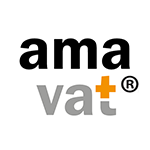Information about One Stop Shop (OSS)

Until now, all e-commerce companies from the EU that sell goods to other EU countries, after exceeding a certain sales threshold (depending on the country the threshold ranges from EUR 35,000 to EUR 100,000) are obliged to register and pay tax in the country of the buyer.
The European Commission has planned changes in this regard – from 1 July 2021, the above rule will be abolished and replaced with a new EU-wide threshold of EUR 10,000 (total to all EU countries). Below this new threshold, national VAT rules can still be applied to cross-border sales. For sales above this threshold, you are required to pay VAT in the Member State where your buyers are located. To do this, you can register for the new EU OSS system in the country where your company is based.
Each EU Member State will have an OSS web portal where businesses can register.
However, this single registration will be valid for all sales to consumers in all EU member states.
Businesses will have to apply the VAT rate in force in the Member State to which the goods are shipped.
The assumptions of the OSS – One Stop Shop system are defined in the European Directive No. 2017/2455, which aims to simplify tax processes for e-commerce sellers. According to the new regulations, B2C goods supplies should be taxed at the destination.
The system allows all shipping transactions made in Europe to end consumers in a single consolidated VAT return, filed in the country where the seller is established. As a result, traders who sell online to private individuals, above the statutory threshold of EUR 10,000, will be taxed using the new method.
If you have opted for the OSS, you must then submit a quarterly tax return showing the value of sales in each country of the European Union. What is important, the tax rates will be the same as in the country of the recipient of goods or services, although the tax settlement will take place in the country of the company’s registered office.
With OSS, only one registration with OSS will be required and recording of sales for 10 years.
Entrepreneurs who sell through the Amazon platform can also benefit from the One Stop Shop mail order scheme. However, if they additionally store their goods in Amazon warehouses (also outside the European Union, eg.UK), they may need to register for VAT. This applies in particular to those businesses that use the pan-European FBA scheme. Any local sales from these warehouses, as well as the movement of these goods to and from another warehouse, must be reported on the national VAT return. To do this, you will need a VAT number.
In order to comply with the new regulations, in some situations sales through trading platforms such as Amazon will be a two-step process. When a sale takes place, the seller will sell the goods to the trading platform on an intra-Community supply of goods (ICT) basis with a zero VAT rate. The trading platform will then resell the goods to the end customer with the additional VAT charged in the country of destination.
As the Directive indicates, the taxable person making use of the special scheme (or his intermediary) ‘…shall pay the VAT, making reference to the relevant VAT return, no later than the expiry of the deadline by which the return must be submitted. The payment shall be made to a bank account denominated in euro, designated by the Member State of identification. Member States which have not adopted the euro may require payments to be made to a bank account denominated in their own currency.
Your amavat® Team
We are an independent member of HLB. THE GLOBAL ADVISORY AND ACCOUNTING NETWORK.





